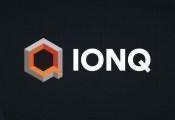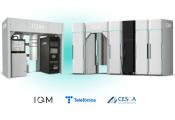University Kaiserslautern Fast Tracks Quantum Computer Development With New DDS Firmware Option
There are many ways to build a Quantum Computer (QC) and RPTU Kaiserslautern’s approach within the Rymax One collaboration is to create an array of single atoms that act as qubits. The challenge is moving and holding each atom in its precise location. This is done by using a laser on each atom that traps it into the center of the laser beam effectively acting as an optical tweezer. However, point-by-point programming of each movement of the beam currently requires a lot of programming and a huge amount of data. This has now been cut dramatically with the use of the new Direct Digital Synthesis (DDS) firmware option from Spectrum Instrumentation so that the position of the lasers can be controlled with a few simple commands that define the start and stop parameters instead of making time consuming, large data array calculations.

Dipl.-Phys. Jonas Witzenrath said, “This is making a huge difference to the progress of our research. Using the new DDS option, we have been able to make rapid progress and reduce the complexity in the system allowing us to focus on advancing the research. The next step is to do the reordering of atoms in a static two dimensional array using the dynamic capabilities of the DDS-firmware." Furthermore, in the next phase, they will use the AWGs to shape ideal UV laser pulses for precisely controlling interactions between qubits.
“DDS has become a vital tool in our project and we are finding that it can actually be used in other things in the lab as it is very flexible and can be used for other functions so we don’t have to buy dedicated equipment for them. For example, pulsed lasers, chirp generation, etc. We worked very closely with Spectrum to develop this DDS feature and are now working on expanding its possible uses in research so that it can help other laboratories.”
He added that the Spectrum AWG cards were chosen as they are becoming the solution of choice for quantum research due to their great analogue performance paired with large memory and high transfer speed onto the card. The latter is crucial as the experiment has to pause until the re-ordering waveforms are computed and uploaded onto the cards. The transfer speed sets the Spectrum AWG cards apart from other products and that is the main reason why they are widely used in the AMO/QC community. The speed of the card’s operation was also very important. Fast AWGs have the intrinsic problem of latencies on the order of tens of milliseconds or large jitter which results in inaccuracies and longer processing times as the system corrects and recorrects. The DDS firmware enables Spectrum’s AWGs to generate commands within twenty microsecond and, due to the intrinsic timing, the commands are practically jitter-free.




































